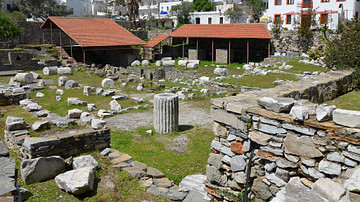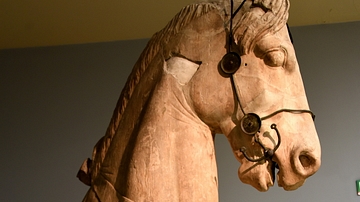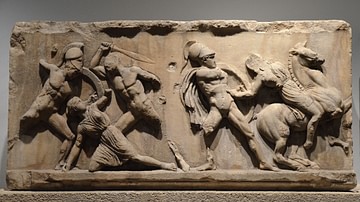Server Costs Fundraiser 2024
Illustration
This is a marble slab of the so-called Centaur frieze of the Mausoleum at Halicarnassus, also known as the Tomb of Mausolus. The whole frieze depicts a violent conflict between Greeks and Centaurs. Here on this slab, we can recognize 3 figures; 2 Greeks and a woman, and parts of two Centaurs. The woman is depicted wearing a chiton belted at the waist and a himation; her right breast is bare. This representation of the woman's clothing may suggest that she had been assaulted by a Centaur but has escaped or been rescued.
The Centaurs were invited to the wedding of the Lapith king Perithoos, but they became inebriated and tried to carry off the Lapith woman. A violent battle ensured after then. Found built into the walls of the castle of St Peter, Bodrum. Circa 350 BCE. (The British Museum, London)
About the Author
Cite This Work
APA Style
Amin, O. S. M. (2016, May 29). The Centaur Frieze of the Mausoleum at Halicarnassus. World History Encyclopedia. Retrieved from https://www.worldhistory.org/image/5084/the-centaur-frieze-of-the-mausoleum-at-halicarnass/
Chicago Style
Amin, Osama Shukir Muhammed. "The Centaur Frieze of the Mausoleum at Halicarnassus." World History Encyclopedia. Last modified May 29, 2016. https://www.worldhistory.org/image/5084/the-centaur-frieze-of-the-mausoleum-at-halicarnass/.
MLA Style
Amin, Osama Shukir Muhammed. "The Centaur Frieze of the Mausoleum at Halicarnassus." World History Encyclopedia. World History Encyclopedia, 29 May 2016. Web. 27 Jul 2024.








